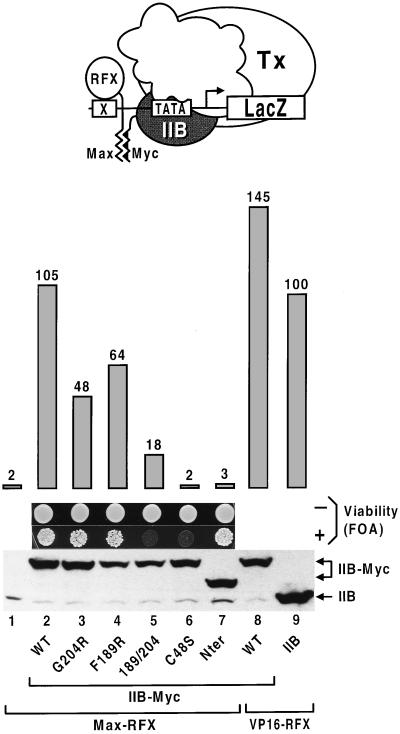Figure 2.
Transcriptional activation upon recruitment of TFIIB–Myc by Max–RFX. The activity of the RFX-dependent lacZ gene was determined in strains expressing the indicated RFX fusion proteins from the TBP promoter and TFIIB derivatives from the native TFIIB promoter. The parent strain contains a chromosomal TFIIB deletion and expresses low levels of wild-type TFIIB from pYES2 by growing the cells in glucose medium. The ability of the TFIIB–Myc variants to support viability was examined by spotting 104 transformants on plates containing 5-fluoroorotic acid (FOA), a uracil analog that selects against cells carrying pYES2 marked with URA3 and encoding wild-type TFIIB. A protein immunoblot of whole-cell extracts from strains expressing the TFIIB–Myc proteins at higher levels from the ADH1 promoter (lanes 1–8) or TFIIB from its own promoter (lane 9) is shown at the bottom with the positions of TFIIB and TFIIB–Myc indicated. The TFIIB–Myc mutants contain either (lanes 4 and 3) or both (lane 5) F189R, G204R substitutions of residues known from the crystal structure to contact TBP (38), or a single C48S mutation (lane 6) important for interaction with pol II–TFIIF (39–42). Nter designates a hybrid protein carrying the Myc dimerization motif at the amino terminus (lane 7).

